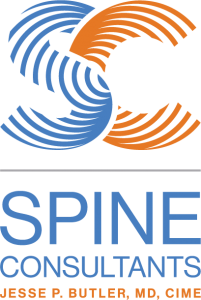The spinal cord should have enough space in the spinal canal. This space can become narrowed if there is a herniated disc or bony overgrowth. Spinal stenosis is the narrowing of the spinal canal, and it’s responsible for several back pain issues including sciatica.
What is Spinal Stenosis?
Spinal stenosis occurs when your spine lacks enough space to support your spinal cord and its nerves The type of spinal stenosis you have depends on where the condition is on your spine.
It can occur anywhere along the spine but most commonly occurs in two areas: The type you have depends on where on your spine the condition is.
- Cervical stenosis: narrowing of the neck portion of the spine.
- Lumbar stenosis: narrowing of the lower back portion of the spine.
How Does Spinal Stenosis Affect the Body?
People with spinal stenosis often have no symptoms despite signs shown on an MRI or CT scan. If symptoms do occur, they usually begin gradually and progress over time. The symptoms of stenosis vary based on the location and type of nerves affected.
Cervical stenosis symptoms
These symptoms may show up and affect your other body parts and motor coordination. If the condition is severe, you may experience bowel or bladder dysfunction.
- Tingling or numbness in hands, arms, legs, or feet
- Hand, arm, leg, or foot weakness
- Having difficulty walking and balancing
- Pain in the neck
Lumbar stenosis symptoms
You experience lumbar stenosis when you are having problems with your legs as well as your ability to bend forward, stand, and sit.
- Numbness or tingling in a foot or leg
- Weakness in a foot or leg
- Cramping or pain in one or both legs, usually relieved by bending forward or sitting and when you stand for long periods of time or walk
- Low back pain
Risk Factors Contributing to Spinal Stenosis
Typically, spinal stenosis is caused by arthritis, a condition in which your cartilage wears away and your bone tissue grows. The wear and tear of osteoarthritis may compress your spinal cord and spinal nerves, leading to disc degeneration, ligament thickening, and bone spurs.
There are other causes of spinal stenosis, including:
Herniated disc: If the vertebrae are damaged, the jelly-like substance can seep out and press onto your spinal cord or nerves.
Spine injuries: An injury to the spine may cause it to fracture or become inflamed.
Tumors on the spinal cord: Malignant growth that comes into contact with the spinal cord may cause stenosis.
Paget’s disease: A person suffering from this disorder will develop extremely large and brittle bones. As a result, the spinal canal will narrow, causing nerve problems.
Thickened ligaments: If the cords connecting your bones become rigid and thick, they may bulge into your spinal canal.
Genetic factors and aging: There are some people who are born with spinal stenosis or conditions leading to it. They begin to experience complications with the disease between the ages of 30 and 50. Trauma, scoliosis, and genetic diseases can affect young adults.
How Can Spinal Stenosis Be Treated?
Possible treatments include common pain relievers such as Ibuprofen, aspirin, and acetaminophen are common pain relievers. Amitriptyline and other tricyclic antidepressants can reduce chronic pain. Using anti-seizure medications relives pain from nerve damage.
The doctor can also inject a steroid into your back or neck. However, because steroids have negative side effects, they are only used in small amounts. Injecting nerve block anesthetics can reduce pain temporarily, when done correctly.
Surgery for Spinal Stenosis
Severe spinal stenosis may affect your movement or cause problems with your bladder and bowels. You may need to undergo a procedure to ease the pain and reduce inflammation between your bones. There are several surgical options available to you.
Laminectomy: The surgeon removes a rear portion of the afflicted vertebra during this procedure.
Laminoplasty: Implanted metal hardware creates a bridge between the vertebrae of your neck and the open gaps in your spine.
Laminotomy: Your surgeon may remove part of your vertebrae in order to relieve pressure.
Decompression procedure: With needle-like devices, the surgeon removes some of the thickened ligaments in your spinal column.
Each surgery comes with its risks. Only a qualified spine surgeon can determine if you are a good candidate for surgical intervention.
Taking a Long-Term Approach to Stenosis
In most cases, spinal stenosis is manageable if you receive sufficient treatment to decrease symptoms and slow development. You may need to change your type of physical activity and manage inflammation and pain to maintain a high degree of mobility. Your doctor can inform you of the treatment options available to you and which would be best suited to your condition.

